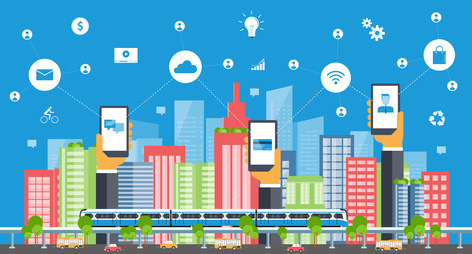5 Essentials for Smart City Development
Big cities such as Sydney and Melbourne are home to many people from around the world. These cities not only offer better employment opportunities but also easy transportation and convenience for a good quality life. However, with an increasing number of people moving to urban areas, authorities find it a challenge to meet their sustainable urbanization goals such as the implementation of smart ICT (Information and Communication Technology) plans. The prevalent use of internet has compelled authorities to not only consider physical needs in smart city development, but also leverage Information Technology to make the environment, mobility, economy, and governance more effective and sustainable. This post outlines five essential city development elements that cities need to acquire on their path to becoming more sustainable and smarter.
1. Broadband Networks
When considering smart city projects, the first thing policy makers can do is ensure broadband networks across the city to supports digital applications in real time. The city development plan should include broadband infrastructure that leverages cable, optical fibre, and wireless networks. Wireless broadband network expands the connectivity and maximum bandwidth reach to all citizens and organizations located in the city and enables a wide range of smart city applications, enhance safety and security, improve the efficiency of municipal services, and promote a better quality of life for residents and visitors.
2. Smart Signals
Given the number of people moving to urban cities, one of the major challenges authorities face is accommodating more cars traversing a fixed number of roads. The need of the hour is to leverage smart signals technology that uses real-time data and automated algorithms to manage traffic. Smart signals, also known as intelligent traffic lights, combine existing technology with artificial intelligence to create lights that have a brain of themselves. Intelligent traffic lights adapt to changing traffic conditions to avoid traffic congestion wherever required and reduce the amount of time cars spend idling. In addition, in coming times smart signals will interface with new vehicle technologies and be able to send an alert to the cars as it turns red.
3. Web-based Applications
Availability of the ICT infrastructure across the city fosters the development of new web-based applications for various types of users. Web-based applications facilitate remote working and e-commerce services for business, and entertainment and communications for individuals. In addition, deploying digital strategies increases the region’s competitiveness. Web-based applications such as sensors can manage the mobility of citizens with an appropriate intelligent transport system (ITS). Smart meters can monitor water consumption, heating, air conditioning, lighting, the physical security of a building, and a sensor-activated video surveillance system can be employed along with the location to enhance security systems, and estimation and risk prevention
systems. In addition, SMEs should be encouraged to leverage these technologies and adopt them to offer novel services to the citizens and business in the city.
4. Road Planning
Road planning is one of the major challenges faced by urban cities in managing incessant road traffic. As road authorities are responsible for the safe and efficient management of road networks, traffic impact assessment (TIA) becomes a valuable tool for analysing traffic generated by proposed developments against new access and increased use of existing access, especially in the short term. It is a descriptive analysis of the scope and intensity of the proposed project, forecast of the traffic impacts and any required mitigation measures to ensure that the highways can safely accommodate a proposed development. It also relates to land use decisions with traffic conditions.
5. Green Infrastructure
Green infrastructure has become a focal point of smart city development projects, as it ensures communities have a conducive environment with clean air and water for generations to come. On the local level, green infrastructure includes green buildings, natural resource harvesting systems, and stormwater planters, among others. Whereas on the large scale, the preservation and restoration of natural landscapes, reduced stormwater and sewage overflows, and protected drinking water supplies are critical components of green infrastructure. Green infrastructure not only boosts the economy but also enhances the health and safety of people living in cities and protects wildlife.
Conclusion
As we can see, aforementioned five essentials for smart city development are interrelated and facilitate collaboration at a local level; they can significantly reduce energy and time costs for all participants and increase the quality of life within the community. To get the most out of each professional element, consultation can help you get an in-depth understanding of smart city planning and the right implementation of traffic engineering for the development of smart cities. For all your questions, feel free to speak with one of our traffic engineers at 0408 395 729.








